10 Historical Murder Mysteries Still Waiting For An Answer
HI STEEMIANS
The tragic the truth is that we will never have the capacity to understand all wrongdoings. In spite of the best endeavors of law requirement, equity isn't generally served, and conclusion everlastingly escapes a few casualties' families. Some of the time, nobody may even understand a wrongdoing has been conferred until it's excessively late to take care of it.History is loaded with cases that would stump even Sherlock Holmes.
Frequently, this isn't on the grounds that they were crafted by criminal driving forces but since there were no hints to go on. Starting at now, these ten homicides remain riddles, and the additional time passes, the more outlandish they are to ever be unraveled.
The Skeleton In The Cellar
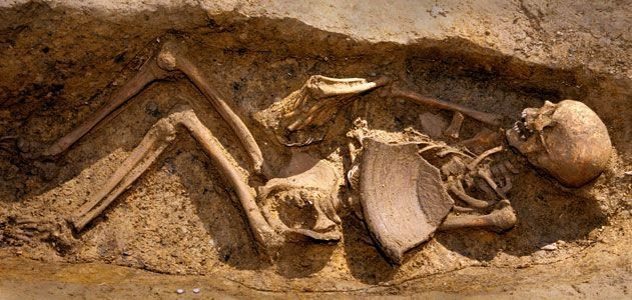
The Lost Towns Project is a progressing archeological venture to rediscover and uncover lost settlements from pioneer Maryland. In 2003, analysts were looking at a site called Leavy Neck in Anne Arundel County when they found a skull in a seventeenth century basement that was utilized for waste. As the group continued uncovering, they found whatever is left of the skeleton stuffed inside the shallow pit with enough power to uproot a kneecap and twist the toes under. It turned out to be progressively evident that the body was likely the casualty of treachery.
In the long run, archeologists wound up noticeably persuaded they had a provincial chilly case staring them in the face and got legal anthropologist Dr. Doug Owsley to help. He distinguished the remaining parts as having a place with a 16-year-old male of European plummet. There were various signs recommending he was in weakness, including packed vertebrae from delayed hard work. Measurable authorities presumed that the young person was, in all likelihood, a contractually bound slave. Moreover, his correct wrist endured perimortem cracks, as though the casualty endeavored to hinder an overwhelming blow.
This, alongside the brisk internment, recommended murder.Based on things encompassing the body, the kid was presumably executed in the vicinity of 1665 and 1675. This was when laws were passed to shield obligated hirelings from manhandle. Archeologists trust that the young person was executed by his lord, who dumped the body in the waste pit to shroud his wrongdoing. The characters of both executioner and casualty remain a puzzle for the time being.
The Wrong Archeologist

In 1911, Michigan researcher Herbert Fletcher DeCou turned out to be a piece of a group of US archeologists who exhumed the old Greek city of Cyrene in cutting edge Libya. On the morning of March 11, the camp was stirred by shots and shouts. The campaign's executive, Richard Norton, was educated that DeCou had been murdered while on his way to the burrow site on the Acropolis. Witnesses said that three Arabs disguised themselves behind a divider, sat tight for DeCou to cruise by, and shot him two times previously making their escape on horseback.
It was generally trusted that the professional killers didn't target DeCou particularly however needed to execute a prominent American and mixed up DeCou for the chief. This was in a matter of seconds before the flare-up of the Italo-Turkish War, where Libya turned into an Italian state, and disdain against the West was high among specific gatherings. Richard Norton's announcement agreed with this idea.
He likewise informally supported certain prattle which was inescapable in the nation at the time. The talk was that the Arab professional killers acted under Italian impact. Clearly, the Italians denied this energetically and, rather, coasted the story that the Michigan excavator was focused by a Bedouin man for laying down with his wife.For a period, the death had the makings of a genuine universal episode. No important discretionary papers have ever been made open, and no one was ever accused of DeCou's murder.
The Spinster Murder
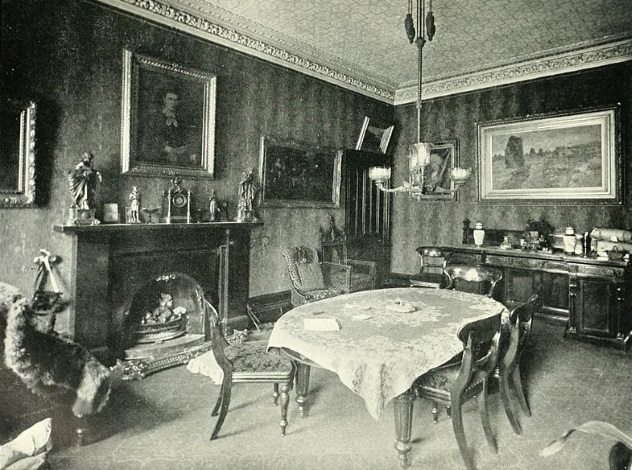
The instance of Oscar Slater is recognized as a standout amongst the most scandalous unnatural birth cycles of equity. A Jewish settler from Germany with a criminal record, Slater was sentenced the 1908 murder of affluent 83-year old maid Marion Gilchrist in Glasgow. His unique capital punishment was driven to life in jail, and Slater served 19 years before being discharged.
The trial and detainment pulled in the consideration of numerous unmistakable individuals from society, most strikingly Sir Arthur Conan Doyle. In 1912, he even expressed "The Case of Oscar Slater," a paper plotting the proof for the sentenced man's blamelessness and arguing for a full exculpate. With all the additional consideration and contention encompassing Slater and his capture and resulting absolution, individuals have a tendency to overlook that Marion Gilchrist's murder is as yet unsolved.
The main strong leads were given by Detective John Thompson Trench, who worked the case. In 1914, he uncovered amid a mystery request that specific confirmation was withheld amid the trial, likely at the command of Marion's compelling relatives. Trench was let go and undermined and passed on in 1919, never getting the chance to see equity served. Some trust the likeliest killer was a relative of Marion Gilchrist, for example, her nephew. Whatever is left of the family at that point concealed it to stay away from open humiliation.
The Sandyford Mystery

A standout amongst the most grievous wrongdoings in the historical backdrop of Glasgow happened in 1862 at 17 Sandyford Place. One of the house's hirelings, Jessie McPherson, was discovered half-bare in her very own pool blood while the proprietors were away on vacation. Doubt fell on previous hireling Jessie McLachlan, who was, in the long run, accused of the murder. After just 15 minutes of consideration, a jury discovered her blameworthy, and the judge condemned her to death by hanging.Public dissent prompted a court commission exploring the confirmation introduced amid the trial.
While they couldn't discover McLachlan guiltless, they drove her sentence to life detainment. Subsequent to serving 15 years, she was discharged on ticket-of-leave and emigrated to the United States, where she spent whatever is left of her life. Despite the fact that the court immediately indicted Jessie McLachlan, popular sentiment remained, for the most part, to support her. A great deal of the books and articles composed looking into the issue depicted her as a substitute.
Others essentially couldn't trust that a lady with no criminal past could murder her affirmed companion with such brutality.For her part, McLachlan constantly blamed James Fleming, the elderly father of McPherson's manager. A common laborers alcoholic with "inconsiderate and unpolished behavior," McLachlan asserted Fleming sexually struck the hireling and afterward murdered her to shroud his wrongdoing.
She at that point confessed to taking a reward from the man to remain calm. In spite of open shock, no one other than McLachlan was ever accused of Jessie McPherson's murder.
The Pitchfork Murder
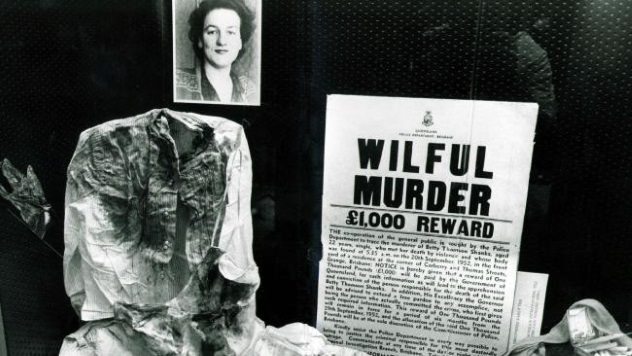
Valentine's Day 1945 in Quinton, Warwickshire, England, was the setting for an especially abhorrent murder: 74-year-old Charles Walton was found by his niece, Edie, and a neighbor after he neglected to return home from work. His body was gravely wounded, and a few ribs were broken. His throat was cut with his own particular cut snare, and a pitchfork was crashed into the side of his neck, sticking him to the ground.
The case was explored by Chief Inspector and future wrongdoing creator Robert Fabian. As indicated by his book, Fabian of the Yard, he generally speculated a man named Alfred Potter to be the guilty party. He was the supervisor of the ranch where Walton worked and gave repudiating proclamations to the police in regards to his developments and collaborations with the casualty.
Be that as it may, Fabian would never discover adequate confirmation against Potter or even set up a motive.The fundamental motivation behind why the murder turned out to be so notorious, other than the fierceness associated with the slaughtering, was its charged association with witchcraft. Verbal spread that Walton had a cross cut in his chest. This prompted bits of gossip that he was murdered as a blood forfeit by an agreement of witches or that he was himself a witch, slaughtered by somebody he put a spell on.
The Day Brisbane Lost Its Innocence
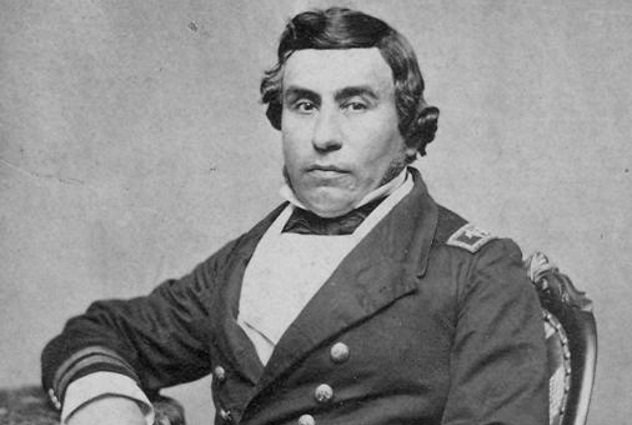
The brutal murder of 22-year-old Betty Shanks shook Australia in 1952. Betty's fiercely beaten body was found in a garden in a suburb of Brisbane on the morning of September 20. Her passing started the greatest criminal examination ever, yet all endeavors demonstrated unproductive. Today, regardless it remains the most seasoned unsolved murder in Brisbane.
Police just had one strong prompt go on: the depiction from a cabbie of a man he saw bounce a fence toward the scene of the wrongdoing at 10:30 PM and after that return three hours after the fact. Examiners talked with many suspects and even acquired a couple of admissions, however every one of them turned out to be false.The case blended up new discussion in 2014, when two writers distributed books around a similar time, blaming distinctive individuals. One of them was Brisbane scholarly Ted Duhs. The other was previous columnist Ken Blanch, who secured the first case in 1952.
Duhs asserted the executioner was a locksmith named Eric Steery, who assaulted Betty Shanks when she rebuked his advances. These points of interest came affability of Steery's own little girl Delcia, who guaranteed she went to the police a few times previously going to Duhs however was rejected each time. Whiten didn't openly name his suspect. He was a previous armed force driver who professedly attempted to kidnap another young lady before Betty. The columnist is urging police to complete a DNA test yet has forgotten about the suspect since 2007.
The Death Of A War Hero

The 150-year-old murder of US Civil War legend George "Colvos" Colvocoresses still riddles students of history and novice sleuths right up 'til the present time. The Greek-American initially came to conspicuousness as chief of the USS Saratoga amid the war. He resigned in 1867 and was gunned down on Clinton Street in Bridgeport, Connecticut, after five years. Colvocoresses was heading out to New York and had with him $8,000 money inside a calfskin bag and in addition a bamboo sword stick. He was shot once in the left half of the chest, sufficiently close for the explosive to set his shirt ablaze. A gun, powder horn, percussion tops, and projectiles were recuperated a short separation from his body.
The unfilled handbag was discovered the following day a couple of hundred yards away. The chief's sword stick looked as though it was harmed in a battle. Since the cash was feeling the loss of, the most evident answer recommended a burglary. In any case, a few witnesses revealed that Colvocoresses was acting oddly preceding his passing, so it has been estimated that somebody particularly focused on Colvos.
Shockingly, a strong case couldn't be worked because of police misusing proof, which some credited to inadequacy and others to a deliberate cover-up.Several individuals admitted to the murder throughout the years, including a Danish officer who conceded on his deathbed to executing Colvocoresses amid a theft gone bad.[7] And yet, a standout amongst the most unavoidable thoughts guarantees that the war legend slaughtered himself. This speculation was eagerly bolstered by insurance agencies, which would not like to pay out the different strategies Colvocoresses took out, totaling nearly $200,000.
The Ruislip Murder Mile
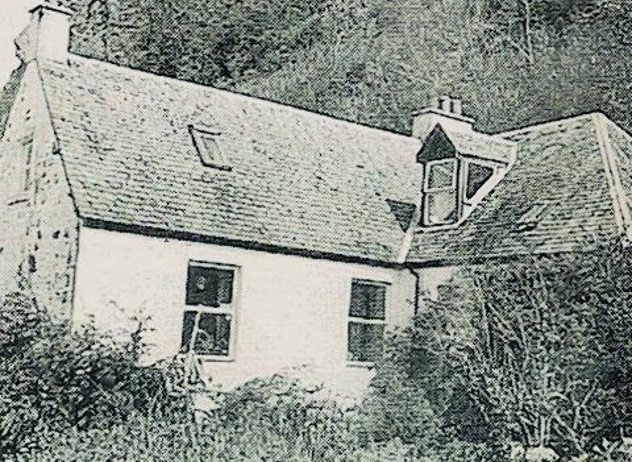
On the night of September 14, 1954, 21-year-old Jean Mary Townsend was coming back to her home in the London suburb of Ruislip from a gathering in the West End. She was most recently seen leaving South Ruislip Station at around midnight, and her body was discovered the following day, choked with her own particular scarf. There were no indications of rape, despite the fact that Jean's shoes and leggings were expelled and in this manner discovered close-by with her tote.
The case began with a couple of good leads. A man working at the US international safe haven approached saying he pursued away a "Peeping Tom" a couple of days earlier. A lady who lived near the murder scene asserted she heard a lady's shout that night and, not long after, two men contending, one with an American accent.Investigators trusted the executioner could have been an American serviceman, in all likelihood positioned at the adjacent South Ruislip Air Station. They likewise thought about how conceivable it is this wasn't his first murder.
Prior that month, a whore named Ellen Carlin was choked in Pimlico, soon after being seen with a US Air Force sergeant. In any case, this murder was thusly attributed to Scottish serial executioner Peter Manuel.Despite the promising begin, analysts never found a reasonable suspect for Jean Townsend's murder. after 16 years, another lady named Gloria Booth was executed similarly as Jean in a similar territory, now named the "Ruislip Murder Mile." Police considered its possibility being crafted by a similar guilty party yet never discovered anything to substantiate the claim. Gloria's sister ended up noticeably persuaded that Gloria succumbed to the Yorkshire Ripper.
The Shooting At Portencross

On October 13, 1913, Mary Speir Gunn was sitting before the discharge alongside her sister and her significant other, Jessie and Alexander McLaren, in their bungalow outside Portencross, Scotland. Abruptly, shots began ringing out, and projectiles came flying through the window. Every one of the three were hit, however Alexander and his better half recouped from their wounds. Mary was murdered quickly with a shot to the heart.Initially, specialists trusted that Alexander McLaren was the expected target.
The primary shots experienced his seat and missed him by inches. He had quite recently resigned from cultivating and had sold his domesticated animals at sell off. Anybody mindful of his issues could have expected the family kept an amount close by. Burglary resembled a probable thought process, yet the shooter made no endeavor to enter the bungalow. Maybe he saw he neglected to slaughter Alexander and, having come up short on shots, didn't need a head on encounter.
A short time later, agents opined that it could have been a spurned darling who needed Mary dead. She was notable for her great looks and was lovingly nicknamed "the Beauty of Beith." Police made request the distance to Canada, where Mary Gunn beforehand lived with another sister, however they couldn't locate any strong leads. All specialists knew was that the executioner was, doubtlessly, an outsider. A few local people guaranteed that an obscure man moved toward them that day, requesting headings to Portencross. Over a century later, regardless he stays unidentified.
The Death Of A Nobleman
For just about 700 years, the demise of Italian aristocrat Cangrande della Scalla was viewed as coincidental. Be that as it may, in 2004, an advanced examination affirmed long-held doubts that he had, truth be told, been harmed. Obviously, this made one wonder: Who slaughtered him?Part of the decision group of Verona, Cangrande first served in the military amid the Guelph-Ghibelline Wars. He ended up plainly sole ruler in 1311 and vanquished a few adjacent city-states. In 1329, after various crusades, Cangrande at last took control of Treviso. Amid his state section, he fell sick, took to bed, and kicked the bucket a couple of days later.Contemporary accounts said that Cangrande turned out to be sick subsequent to drinking from a contaminated spring.
Notwithstanding, present day history specialists brought up that his side effects could have additionally been characteristic of harming. At the point when his body was uncovered in 2004, researchers found that it was normally embalmed, and a few organs could in any case be analyzed. They played out a full examination, yet it was palynology which provided them their greatest insight. Tests were taken from the colon and defecation, and an examination uncovered spores of the dangerous plant Digitalis purpurea, otherwise called the basic foxglove.
The outcomes were additionally bolstered by the toxicological investigation of excrement, liver, and hair tests, which discovered lethal centralizations of digitoxin and digoxin. While Cangrande's demise was in all likelihood kill, the guilty party's character will probably remain a secret. History specialists have one clear suspect: Cangrande's nephew, Mastino II, who took control after his uncle's demise.
Don't forget to Follow me here=> https://steemit.com/@t3ddy
If you like the content then don't forget to Upvote and Resteem the following post .

Bye & Take Care